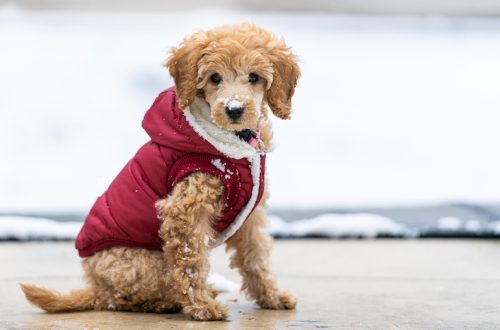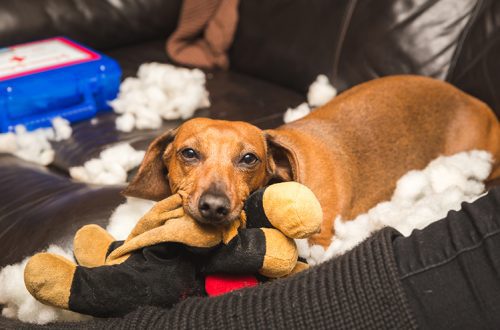
Why is autumn dangerous for dogs?
Autumn is the time when you can wallow in rustling leaves, cut through puddles like a boat and catch raindrops in your mouth. And also get cold, catch a cold and get hurt …
Do you want your dog to get only positive emotions from the autumn months? Then read our article and find out how to protect it from autumn troubles.
The key to a pet’s safety is a vigilant owner. You must always be vigilant. Even when your favorite dog is playing cheerfully with colorful leaves – and you are beside yourself with emotion. You cannot see what lies on the ground under the fallen leaves. Suddenly there is broken glass, fittings or, for example, a snake?
We list the 7 main dangers that lie in wait for a dog in the fall. And we’ll figure out how to avoid them.
1. Autumn leaves
More precisely, what can be hidden under them. The dog may step on something sharp, eat something inedible, or encounter a wild animal such as a rodent or a snake.
What to do?
Vaccinate your pet
If possible, inspect the area where you walk with your dog
Do not leave your pet unattended
Walk on a leash. And so that the dog does not pick up anything from the ground, it is advisable to put a muzzle on it.
2. Sticks
What could be dangerous about them? Firstly, the sticks break under the pressure of the teeth and can seriously injure the dog’s mouth. Secondly, sticks can contain harmful substances (poison from rats, reagents, etc.), pathogens of infections carried by rodents or stray dogs, helminth eggs.
Playing with street sticks is never recommended, regardless of the time of year. But in autumn the situation is aggravated due to humidity and dirt. Plus, cities are starting to poison rodents – and the risk of getting dangerous substances on sticks becomes higher.
What to do?
- Replace street sticks with special toys for dogs.
3. Ticks and other parasites
Ticks don’t go away with summer. They will fall asleep only when the winter frosts set in. So in the fall, your dog has every chance of meeting a tick.
Fleas can be infested all year round, even in winter. As well as helminths.
What to do?
- Regularly treat your pet from external and internal parasites. Coordinate the treatment scheme with a veterinarian.
4. Skin and coat problems
Shedding, dry skin, deterioration in the quality of wool and tangles – these problems often overtake the dog in the fall. The change of seasons, the restructuring of the body and the dry air in the apartments are to blame for everything.
What to do?
- Revise the diet and, if necessary, increase its nutritional value. In preparation for winter, the body may need more vitamins and minerals. The diet must be balanced
- Pick the right skin care products. At the very least, your dog needs the right shampoo and conditioner. It is recommended to wash the dog at least 1 time in 3 weeks.
- Take proper care of your hair. On this issue, it is better to consult with a groomer: he will tell you how often and how to comb your dog, what you need to know about his skin and coat type, and what kind of care is needed.
- Properly comb out and remove tangles in a timely manner. Wool can be combed only after moistening it with a special lotion.
- Protect wool from dirt. To do this, in bad weather, you can wear a special jumpsuit on the dog.
5. Cracks in the paws
In autumn, the paws are constantly in contact with moisture, and the skin on them can begin to crack and become inflamed. Dirt can contain chemicals that exacerbate the picture.
What to do?
Wash paws after every walk. You can do with plain water, but if the paws are very dirty, you will need a special shampoo or conditioner. Professional dog conditioners are great for washing paws because do not dry out the skin even with very frequent use
Dry paws thoroughly after washing. Especially the areas between the fingers so that they do not
If there are injuries on the paws, consult a veterinarian. He will determine their nature and prescribe a therapeutic or care product.
If necessary, purchase special shoes for the dog: it will protect both from dirt and from injuries.
6. Subcooling
The dog may retain a “summer” habit – jumping into a pond or frolicking in a downpour. But if in the summer heat such leisure is welcome, then in the fall – in no case.
What to do?
Don’t let your dog get cold. Swimming in ponds and walking in the rain should be postponed until next summer
If your dog gets wet, dry it thoroughly when you get home.
If the pet is sensitive to temperature changes, avoid drafts
At home, the dog should have a cozy warm bed.
7. Инфекции
In autumn, the dog is rebuilt, preparing for the cold. The body begins to spend more energy on warming and seasonal molting, so the immune system becomes weak. All this increases the risk of catching an infectious disease.
What to do?
Follow the vaccination schedule
Treat for parasites
Follow the right diet
Avoid contact with wild and stray animals.
These are the main issues your dog may face during the fall months.
Friends, what would you add? What changes do you notice in your pets in the fall?





